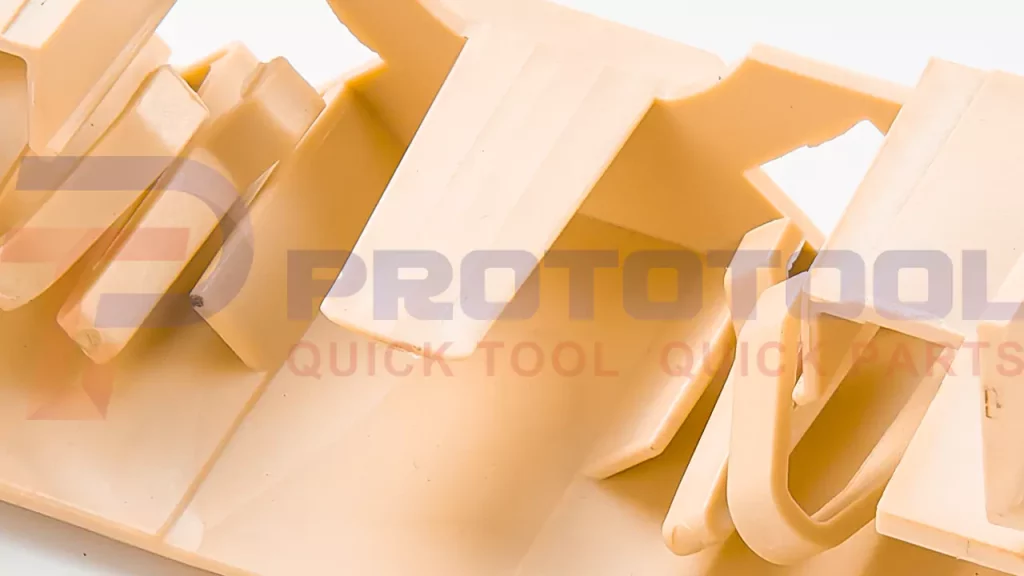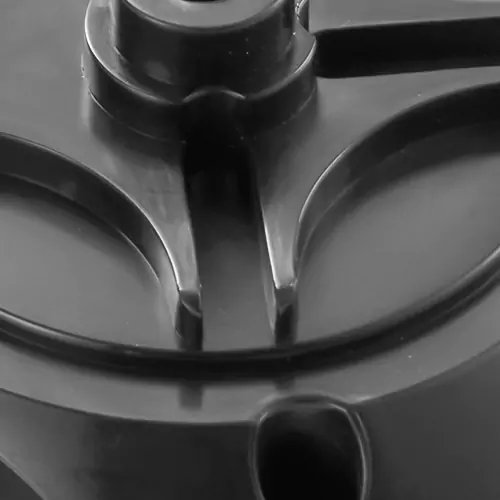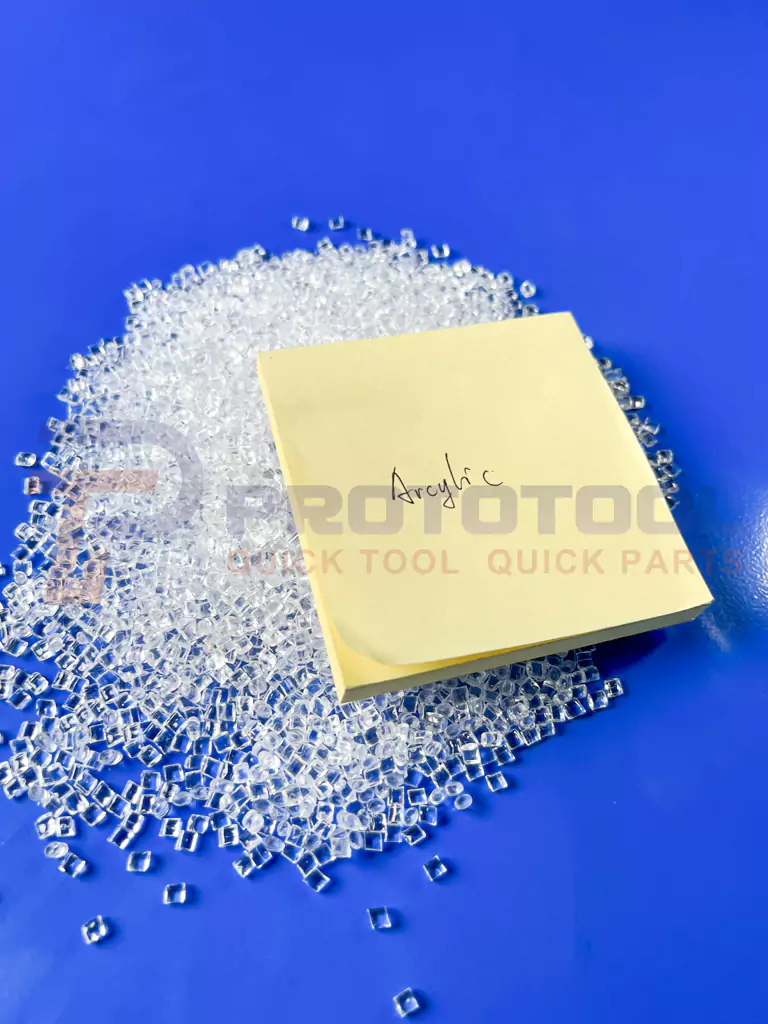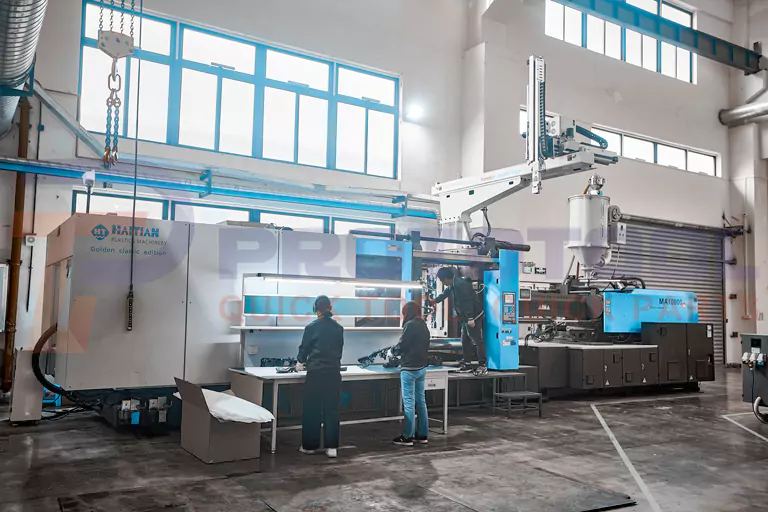Various industries, including aerospace, automotive, medical, and even consumer goods, employ injection molding extensively. In addition to providing excellent outcomes, they are among the most practical solutions available. Next, let’s discover some fascinating facts about custom injection molding.

Injection molding: what is it?
Pieces are formed by injecting a liquid material into a mold in a manufacturing process known as injection molding. Although it may be used with a range of different materials, such as metals and glass, thermoplastic polymers are the most frequently utilized for it. The method involves melting small material pellets into a liquid, forcing the heated liquid through a nozzle into a mold, and then casting the liquid into the inside cavity of the mold, which is the negative of the item being made. Once the molten components have cooled, ejector pins are used to extract them from the mold.
An injection molding process uses a four-stroke cycle. The molten material is first poured into the mold cavity, and once it has quickly cooled and become firm, it is removed from the mold (turn solid). When the mold cavity finally opens, the part is exposed to the atmosphere and given a place to fall, which it does after being eventually ejected by pins.

What common materials are used in plastic injection molding?
Numerous thermoplastic polymers can be used to create:
Polycarbonate (PC):
A collection of thermoplastic polymers with carbonate groups as part of their chemical compositions are known as polycarbonates. Due to its molecular structure, processing increases polycarbonate’s viscosity, contributing to its high degree of stiffness and thermal resistance. Despite this, polycarbonates are popular for various products because they can be easily molded and thermoformed.
Acrylonitrile Butadiene Styrene (ABS):
With three primary components, acrylonitrile, butadiene, and styrene, ABS is a widely used plastic injection molding material. The ABS terpolymer comprises a firm mixture of these monomers, each of which adds particular qualities. ABS has high strength, toughness, temperature, and impact resistance. It provides a premium glossy surface finish and may be easily molded. The melting point of this plastic polymer has yet to be discovered in advance.
Polyethylene (PE):
Several categories of polythene thermoplastic polymers are generally separated depending on density. Medium-density polyethylene (MDPE), Low-density polyethylene (LDPE), high-density polyethylene (HDPE), and ultra-high molecular weight polyethylene are some of these (UHMWPE or UHMW). The tensile, flexural strength, chemical and abrasion resistance, and surface hardness are all generally inversely correlated with density.
Polyoxymethylene (POM):
Engineering thermoplastic polyoxymethylene, also known as polyacetal/acetal/polyformaldehyde/Delrin, is used in precision parts with high stiffness, low friction, and excellent dimensional stability. It is created by many chemical companies using slightly varying formulas, as is the case with many other synthetic polymers. Its defining characteristics are POM’s great strength, hardness, and stiffness down to 40°C.
Plastic Nylon (PA):
An artificial thermoplastic polymer frequently utilized in injection molding applications is nylon plastic (PA). It is a flexible, strong material that can be utilized in various ways. Silk, rubber, and latex are other materials that can be used instead that are more expensive.
Acrylic (PMMA):
A class of polymers known as acrylics is created from acrylate monomers. The transparency, durability, and suppleness of these plastics are well known. Polyacrylates or acrylate polymers are other names for them that are frequently used. As an adhesive, acrylate polymer is commonly found in cosmetics like nail paint. Polymethyl methacrylate is the most popular acrylic material (PMMA).

Facts worth knowing about plastic injection molding:
Capability to create detailed and complicated geometry:
Injection molding may assist businesses in producing highly complicated, intricate plastic parts in significant quantities with almost no variation if the correct tool design and a scientific molding approach to process optimization are used. Relying on the extensive data collecting and analysis methods at the core of scientific molding and the engineers trained in the process is the key to consistency. A manufacturing process that is tightly regulated and repeatable requires specialized development and documentation of the standards, parameters, and actions needed to generate it.
Performance and efficiency:
Manufacturers have a certain efficiency advantage when working with a skilled custom injection molding partner. When deciding how to optimize part design and manufacture, the molder’s teams—from engineering to production—will probably be able to draw on decades of experience. Time and financial commitments are typically streamlined when best practices are used, such as concentrating on design up front to reduce issues later and integrating value-added services to combine production process processes.
Waste reduction:
Since the pieces typically look finished upon ejection, very little post-production work is generally needed. Injection molding is a very environmentally friendly alternative thanks to the machine’s unique ability to reground all refuse for reuse. Suppliers of injection molding solutions are aware of the positive effects of sustainable practices, such as using plastic regrind, which reduces waste and directly benefits the manufacturer on the environment and the economy.
Possibility of using several plastics at once:
Components consisting of various materials are frequently used while designing complex parts. Despite appearing to be a simple decision question, mixing polymers securely can be very challenging. The molder’s project engineers’ plastics experience is essential in reducing faults, injury risks, and warranty claims by guaranteeing compatibility under all conditions. Because it allows for the co-injection of several materials, injection molding is favored worldwide. More businesses than previously conceivable can now use the method thanks to recent improvements in injection molding technology.
Endurance and power:
Today’s lightweight thermoplastics can resist even the harshest circumstances on par with — or better than — metal parts due to the significant increase in strength and durability of plastics throughout time. More than 25,000 engineered materials are available to build complex injection-molded applications. In addition, precise part specifications and characteristics, such as high tensile strength, can be met by formulating high-performance blends and hybrids. Plastic can have fillers added to it to increase its strength or to give the completed product other desired qualities, including flexibility or resistance to UV radiation.
Cost-cutting measures:
Injection molding offers OEMs several cost-saving options, including over-molding and consolidating plastic parts. Nevertheless, communication between OEM and injection molding engineering teams well before production is set as the most effective strategy to manage costs. The number of moldability issues that occasionally arise can be significantly decreased by concentrating on Design for Manufacturability and other intricate procedures throughout the design phase.
This lowers the need for costly tooling changes, downtime, and other production delays. Since time is money, the expediency of the custom molding procedure is a significant financial asset. It can cost up to 25 times more per unit to machine plastic components than to have their injection molded.

Accuracy in production:
Injection molders can produce accurate designs within +/-0.005 inches for manufacturers with complicated part designs that need strict tolerances. In addition to being feasible, these measurements can repeatedly be made using various manufacturing runs and pieces of machinery. A nearly infinite variety of plastic components can be produced using custom plastic injection molding. While the completed items must fulfill exacting standards, molds must abide by some design restrictions.
Reduce the time needed for development:
Engineers who specialize in injection molding may be able to produce products more quickly using their different skill sets. By doing this, manufacturers are guaranteed shorter manufacturing cycles and quicker delivery of products free from flaws. An injection molding manufacturing technique is ideally suited to producing numerous identical, single-piece components.
Bottle lids, plastic combs, miniature furniture, and many more sophisticated items for the electrical and automotive industries are examples of products that can be made. High production output rates are possible because of the method, and inserts can even be used inside the mold.
Lightweight outcomes:
Although manufacturers employ lightweight across a variety of industries, it is arguably most common in the automotive sector. Simply expressed, the use of plastic parts contributes to the weight reduction of metal parts. These days, metal parts can be replaced with high-strength, lightweight thermoplastics with hardly any loss in strength or dependability. It may be optional to finish the part when it comes out of the mold. Another reason for the low prices is this.
Highly adaptable:
When it comes to injection molding, flexibility is key, whether it’s because of the characteristics of various plastics or because producers can choose their bespoke colors or accommodate particular project requirements. Particularly when compared to metal, injection molding allows producers more design flexibility. It is simple to modify the color or material used in production. Additionally, it is created specifically for your requirements.
So Prototool is the way to go if you’re seeking a dependable solution to turn your concepts into goods and products. They have a lengthy history in the industry and provide the best custom injection molding services.










